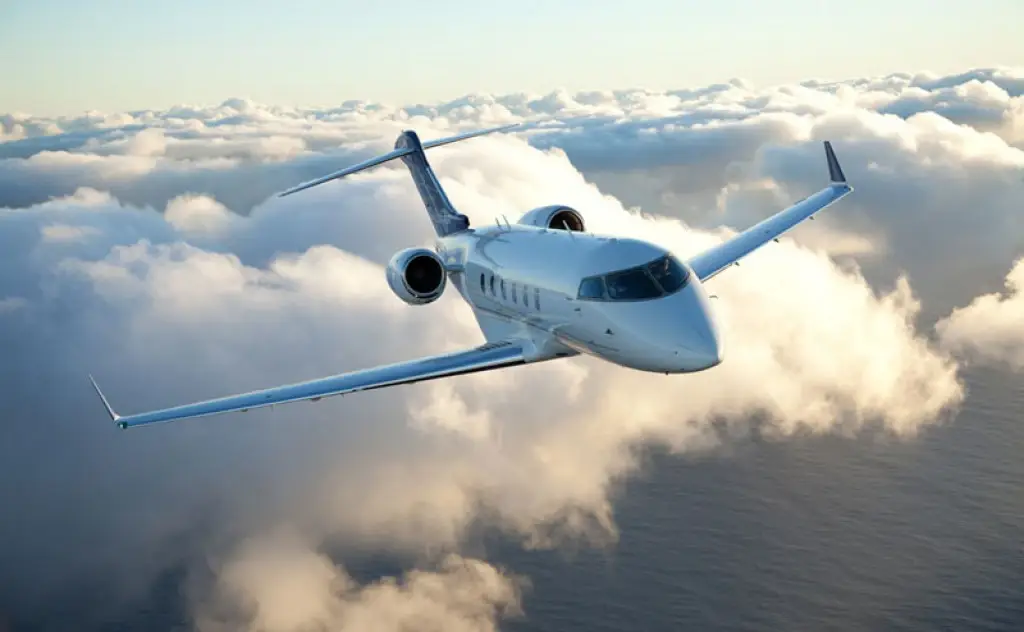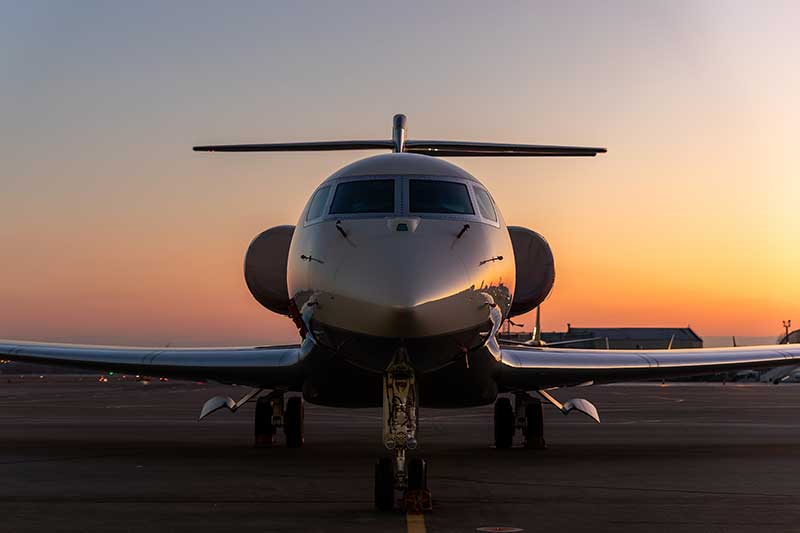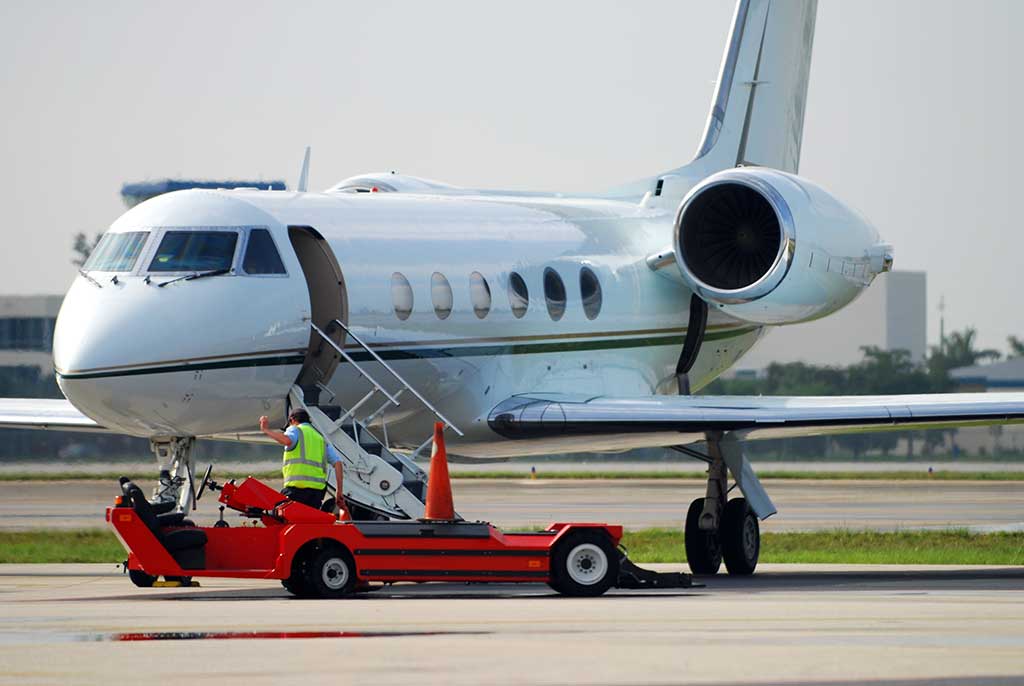How do you determine a private jet's speed, and is a faster jet always the best jet for your trip? Learn about cruise speed in our aircraft speed guide.
What is Cruise Speed (and Does Faster Always Mean Better)?
Cruise speed is the sustainable velocity a private jet maintains at cruising altitude. While faster jets may save time, cruise speed must be balanced with mission fit, fuel efficiency, and passenger load. This blog breaks down when faster is better — and when it’s not.
- Cruise speed ≠ top speed — it’s what matters most in-flight.
- Higher cruise altitudes generally allow for faster, more efficient travel.
- Private jets cruise between 400–500 knots; commercial jets 450–480 knots.
- Time savings from faster jets are modest on short routes, more significant on long ones.
- Ideal cruise speed varies by route, payload, and passenger count.
When it comes to mission-critical private flights, there are few sweeter words than “we’re running ahead of schedule.” Most professionals agree that efficiency is a key factor in their decision to travel via private jet. However, the assumption that a faster flight is always a better flight may be misguided.
It’s common to think of private jet speed in terms of an aircraft’s top speed. That refers to a plane’s maximum velocity. In essence, it’s the fastest a plane can safely fly.
With that in mind, we encourage VIP travelers to consider a jet’s cruise speed. That’s the speed an aircraft will maintain once it reaches cruising altitude. Cruise speed plays a critical role in everything from flight time and fuel efficiency to overall cost and comfort.
In this blog, we aim to define what cruise speed really means when planning private jet travel. We will also cover how cruise speed varies across popular private jets. Ultimately, we’ll help you understand why faster doesn’t always mean better when selecting the right aircraft for your trip.

What is Cruise Speed in a Private Jet?
Cruise speed refers to the sustainable velocity an aircraft maintains once it reaches its cruising altitude. Cruising altitude is the height at which an aircraft flies for the majority of the journey to its destination.
Upon reaching cruise altitude, the aircraft operates most efficiently. Generally speaking, flying at higher altitudes results in a smoother ride, more direct routing, and improved fuel efficiency. Jets at cruising altitude require less engine thrust, which also makes the trip quieter. That’s why private jets tend to be the most efficient and comfortable way to fly.
For private jets, cruising altitude typically ranges between 35,000 and 45,000 feet. Some models consistently cruise as high as 51,000 feet. That’s considerably higher than the cruising altitude of commercial aircraft, which is typically between 33,000 and 38,000 feet.
Understanding Cruising Altitude and Private Jet Speed
In aviation, speed is measured in knots, not miles per hour (mph) or kilometers per hour (km/h). One knot equals one nautical mile per hour or about 1.15 mph. When you see that a private jet has a cruise speed of 450 knots, it means it’s flying at about 518 miles per hour.
Knots are used in aviation because one nautical mile corresponds closely to one minute of latitude. That measurement makes it easier to measure distance and navigate accurately over the Earth's curved surface.
As a jet climbs to higher altitudes, the air becomes less dense. That means less drag, allowing jets to use less engine power. As a result, the actual speed at which a jet travels through the air in knots increases. However, the indicated airspeed that the pilot sees in the cockpit actually decreases due to lower air pressure.
How does cruise altitude factor into private jet speed? At 25,000 feet, a jet might fly at a speed of 370 knots. At 45,000 feet, that same jet could fly at 470 knots, even though the engines are working at similar power levels.
Each private jet has an optimal cruise altitude at which it performs its best (though not necessarily its fastest). That means flying higher doesn’t necessarily mean a shorter trip. For example, if the jet is heavy or facing headwinds, a higher cruising altitude won’t increase the overall speed.

What is the Average Speed of a Private Jet?
The average cruising speed of a private jet ranges from 400 to 500 knots, depending on size and class.
For reference:
- Vision Jet Cruise Speed: Approximately 311 knots (358 mph)
- Citation X Cruise Speed: Around 528 knots (608 mph)
- Bombardier Global 7500 Cruise Speed: Up to 516 knots (594 mph)
What Is the Average Cruising Speed of a Passenger Jet?
The average cruising speed of a passenger jet is typically between 450 and 480 knots. That is around 515 to 550 mph or 830 to 890 km/h. While commercial airliners can reach higher speeds, they rarely operate at their maximum capability. This is to conserve fuel and reduce engine wear and tear.
Despite similar cruise speeds at the high end, private jets often arrive sooner than commercial flights. That’s due to shorter boarding times, direct routes, and access to smaller airports closer to destinations.
Does a Higher Cruise Speed Reduce Flight Time?
A higher cruise speed can reduce flight time, but not always significantly. The amount of time you can save depends on several factors. These include the total distance flown, the difference in speed between aircraft, and routing efficiency.
As a general rule, the longer the flight, the more time will be saved at optimal cruising altitude. Flying from New York to Miami in a jet cruising at 460 knots instead of 420 knots might only reduce flight time by 15–20 minutes. On a flight from London to Dubai, it could save over an hour.
Ultimately, the difference matters, but rarely enough to prioritize a jet’s cruise speed or cruise altitude over mission fit.
Choosing a Private Jet for Mission Fit
A jet's ideal cruise speed may vary depending on your route, number of passengers, and payload. Here’s how.
Route Distance
On longer routes, higher cruise speeds can save you 30 minutes to over an hour. These time savings can be critical for business travelers on tight schedules. However, on shorter routes, flying at maximum cruise speed may offer only minimal time savings. Ultimately, it could even increase fuel burn unnecessarily.
Number of Passengers
A jet flying at or near maximum capacity is heavier. Weight can slightly reduce a private jet’s optimal cruise speed or increase fuel consumption. A slightly slower cruise speed may be used to maximize efficiency without significantly compromising arrival time.
Payload and Fuel
A heavier payload may limit the altitude the aircraft can initially climb to. Some jets may cruise lower and slower at the beginning of a long-haul flight. They can then climb higher and accelerate as they burn fuel and become lighter.
In essence, the ideal cruise speed is about finding the best balance between speed, fuel efficiency, and performance for your specific mission. That’s exactly what Paramount Business Jets helps clients optimize on every trip.
Explore our private jet charter options and find the perfect balance of speed, efficiency, and comfort for your next flight. Get a quote on your next charter flight today.








